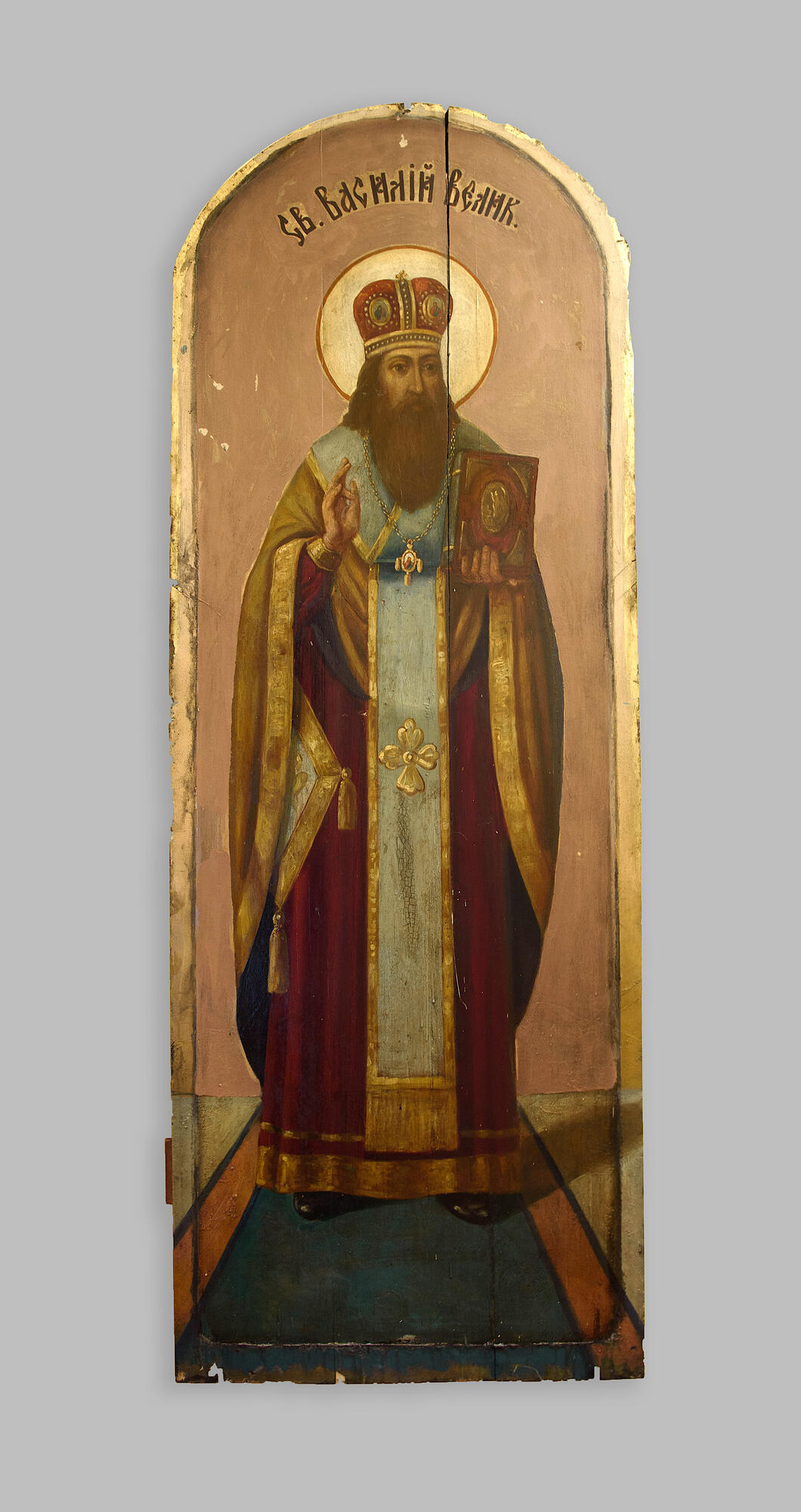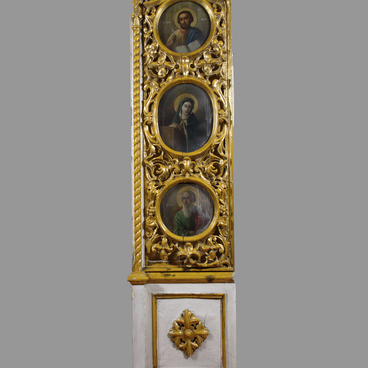The icon of St Basil the Great used to adorn the altar. For a long time, this icon occupied a worthy place in one of the tiers of the iconostasis of the Church of the Icon of the Mother of God “Joy of All Who Sorrow” in Michurinsk.
Basil the Great was Archbishop of Caesarea of Cappadocia and also became famous as an eminent ecclesiastical writer and theologian. He is revered as one of the three Cappadocian Fathers of the Church — along with Gregory of Nyssa and Gregory the Theologian. The Saint composed the Liturgy, authored the fifth and sixth prayers of the morning prayer rule and wrote numerous sermons and letters on Christian themes.
Basil was born in Cappadocia around 330 into a noble, wealthy and pious family. The future saint spent his childhood years on his father’s estate in Pontus. Basil’s early views were shaped by his mother and grandmother. He received his initial education in Caesarea of Cappadocia. Basil then studied in Constantinople. Later, at the age of 26, Basil traveled to Athens, considered at the time one of the centers of enlightenment in the world. There he perfected his knowledge of literature and philosophy, trained in the art of eloquence, and mastered the art of public speaking. Basil also excelled in astronomy and medicine. He held a particularly high regard for the ideals of ascetic life. Later he wrote numerous rules for monastics, and these guidelines later became well known.
According to the original icon from the 16th century, the holy teacher is usually depicted with the Gospel in his left hand. The right hand of the Saint makes a blessing gesture. Initially there were several types of the icon of St. Basil: frontal and half-length. In the 11th century, there was another type of image: a figure bowing in prayer, holding an open scroll in his hands. Icons of St. Basil were widely painted in Russia, they appeared on the monuments dating back to the reign of Ivan the Terrible. In the 17th century, images showing Lenten hymns with the saint performing the service became common.
Basil the Great was Archbishop of Caesarea of Cappadocia and also became famous as an eminent ecclesiastical writer and theologian. He is revered as one of the three Cappadocian Fathers of the Church — along with Gregory of Nyssa and Gregory the Theologian. The Saint composed the Liturgy, authored the fifth and sixth prayers of the morning prayer rule and wrote numerous sermons and letters on Christian themes.
Basil was born in Cappadocia around 330 into a noble, wealthy and pious family. The future saint spent his childhood years on his father’s estate in Pontus. Basil’s early views were shaped by his mother and grandmother. He received his initial education in Caesarea of Cappadocia. Basil then studied in Constantinople. Later, at the age of 26, Basil traveled to Athens, considered at the time one of the centers of enlightenment in the world. There he perfected his knowledge of literature and philosophy, trained in the art of eloquence, and mastered the art of public speaking. Basil also excelled in astronomy and medicine. He held a particularly high regard for the ideals of ascetic life. Later he wrote numerous rules for monastics, and these guidelines later became well known.
According to the original icon from the 16th century, the holy teacher is usually depicted with the Gospel in his left hand. The right hand of the Saint makes a blessing gesture. Initially there were several types of the icon of St. Basil: frontal and half-length. In the 11th century, there was another type of image: a figure bowing in prayer, holding an open scroll in his hands. Icons of St. Basil were widely painted in Russia, they appeared on the monuments dating back to the reign of Ivan the Terrible. In the 17th century, images showing Lenten hymns with the saint performing the service became common.

